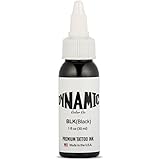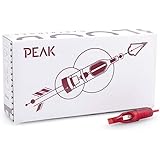The allure of body art, without the lifelong commitment, has captivated many enthusiasts seeking dynamic self-expression. While the video above succinctly demonstrates the core process for applying KINK Tattoo Stickers, mastering this contemporary form of temporary body art requires a deeper understanding of the underlying principles and best practices. Suboptimal application often leads to diminished longevity or uneven color development, issues frequently encountered by those unfamiliar with the specific nuances of semi-permanent dermal transfers. This comprehensive guide is designed to clarify the intricate steps involved, ensuring your KINK Tattoo Stickers are applied flawlessly and exhibit their full potential, resulting in a vibrant, long-lasting display that seamlessly integrates with your personal aesthetic.
Understanding KINK Tattoo Stickers: A Semi-Permanent Approach
Unlike traditional temporary tattoos that merely adhere to the skin’s surface with a superficial adhesive layer, KINK Tattoo Stickers utilize an innovative semi-permanent dye technology. This mechanism involves a transfer process where the active ingredient, often a naturally derived compound like genipin (from gardenia fruit extract) or jagua fruit extract, reacts with amino acids in the outermost layer of the epidermis. This biochemical interaction initiates a natural oxidation process, leading to the gradual appearance of a dark blue or black hue over several hours. This distinctive method is what grants these temporary tattoos their impressive durability and realistic appearance, distinguishing them significantly from their decal-style counterparts.
Pre-Application Preparation: Laying the Foundation for Flawless Adhesion
Optimal adhesion and color development for KINK Tattoo Stickers application are largely dependent upon thorough skin preparation. The chosen application site must be meticulously cleaned to remove any surface impurities, oils, or residues that could impede the dye transfer process. It is generally recommended that the area be washed with a mild soap and water, then completely dried. Furthermore, exfoliating the skin gently approximately 24 hours prior to application can remove dead skin cells, creating a smoother canvas for the tattoo and potentially enhancing its longevity. Any hair in the desired placement area should also be carefully trimmed or shaved, as excessive hair growth can interfere with the tattoo’s adherence and cause uneven color distribution.
Consideration should also be given to the skin’s natural oil production and hydration levels. Excessively oily skin might benefit from a quick wipe with an alcohol-free toner, while overly dry skin could slightly impact the dye’s absorption. However, it is crucial to avoid applying lotions, sunscreens, or any oil-based products to the area immediately before the tattoo application, as these barriers will prevent proper ink transfer and adhesion.
The Precise Application Process for KINK Tattoo Stickers
The actual application of KINK Tattoo Stickers is a meticulous process, where each step contributes significantly to the final outcome. Following the visual guide in the accompanying video, the procedure is initiated by selecting the desired design and carefully excising it from the sheet, ensuring that no edges are inadvertently trimmed. The transparent protective film, which safeguards the design’s integrity, must then be completely removed. This step reveals the adhesive side of the tattoo, which is then placed onto the prepared skin with the design facing downwards.
Once positioned, the tattoo should be held firmly in place. A damp cloth or sponge is then utilized to thoroughly wet the entire paper backing of the tattoo. It is imperative that sufficient pressure is applied consistently across the entire surface for approximately 20-30 seconds. This pressure facilitates the transfer of the semi-permanent dye from the paper substrate to the epidermal layer of the skin. The paper backing should be soaked adequately, but not oversaturated, as excessive water might cause the design to bleed. After the specified duration, the paper backing is gently peeled away, revealing the nascent tattoo design on the skin. Any remaining translucent gel or residue should be allowed to air dry completely without being touched or rubbed.
Post-Application Care and Color Development
The period immediately following the application of temporary tattoo aftercare is critical for optimal color development and tattoo longevity. As noted in the video, the initial appearance of the tattoo will be faint, often a light greenish-blue or even colorless. This is an entirely normal part of the chemical oxidation process. The full color rendering effect typically becomes visible after approximately 10 hours, with some designs continuing to deepen slightly for up to 24-48 hours. During this crucial development phase, specific precautions must be observed.
It is strongly advised that the freshly applied tattoo area not be rubbed or touched for at least 6 hours post-application. Friction or manipulation can disrupt the delicate dye transfer process and lead to smudging or uneven color. While incidental contact with water is generally permissible, it is not recommended that the tattoo be subjected to vigorous washing or prolonged soaking during the initial development period. Activities such as swimming, extensive showering, or heavy perspiration should ideally be postponed until the tattoo has fully darkened. The integrity of the semi-permanent dye is best preserved when allowed to develop undisturbed.
Maximizing Longevity and Protecting Your Semi-Permanent Tattoo
Several factors influence the overall longevity of your semi-permanent tattoos. Proper aftercare significantly extends the life of the KINK Tattoo Stickers, which can typically last anywhere from 7 to 14 days, depending on various individual and environmental elements. To maximize the durability of the design, consider the following:
- Placement: Tattoos placed on areas with less friction or movement, such as the upper arm, calf, or shoulder, tend to last longer. Areas like hands, wrists, feet, or joints experience more constant rubbing and are prone to faster fading.
- Moisturization: While avoiding heavy lotions immediately after application, once the tattoo has fully developed, keeping the surrounding skin hydrated can help maintain its appearance. However, direct application of oil-based moisturizers onto the tattoo itself should be avoided, as oils can accelerate fading.
- Sun Exposure: Prolonged exposure to direct sunlight can cause the tattoo to fade more quickly. If sun exposure is unavoidable, a high-SPF sunscreen can be applied *around* the tattoo, or the area can be covered.
- Avoid Harsh Chemicals: Products containing alcohol, petroleum jelly, or strong exfoliants should be kept away from the tattoo, as these substances will degrade the dye rapidly.
- Gentle Cleansing: When washing the area, a mild, non-abrasive soap should be used, and the tattoo should be gently patted dry rather than rubbed.
By diligently adhering to these post-application guidelines and understanding the scientific basis behind KINK Tattoo Stickers, users can confidently achieve stunning, realistic temporary body art. The key to success lies in careful preparation, precise application, and mindful aftercare, ensuring that the semi-permanent design retains its vibrancy and aesthetic appeal for the longest possible duration.











